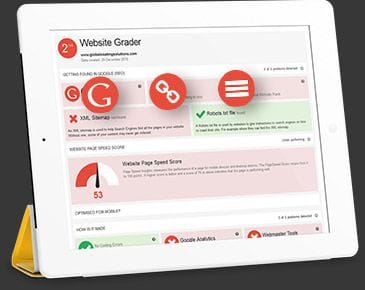Blog Assessment Time: Is Yours Keeping Up?
)
A weekly or even monthly blog can be a real challenge to keep up. Ensuring that a blog is optimized, posting regularly and competing for the precious real estate on page one of Google are all difficult tasks; but sometimes, they feel like child’s play compared to actually picking a topic and writing a few hundred words about. Today, it’s blog assessment time: is your web content keeping up? Here are our tips for making sure it is.
Effective Blogging Starts with Your Topic
Many people wonder how to write a blog for SEO, and it’s easy to get caught up in the notion that SEO is one of the main reasons we blog. It’s certainly a meticulous science that’s woven throughout the writing process. However, the ultimate goal of SEO is to get your content seen by readers, and that’s where having an engaging topic comes into play.
Keywords may dictate the topic you choose, but it takes some critical thinking to go beyond your topic’s keywords and choose the angle to approach the task of actually writing. Is your topic done to death? Doing some research online before you start writing can help you get an idea of how dense the competition already is.
If you find that the Internet is already lousy with your topic, but you need to write about it for strategic reasons, don’t despair! Finding a new, creative or unusual twist on your topic can be the key to refreshing it, jumping the line and getting those clicks. An outline (yes, the kind you did for high school essays) can go a long way to helping you think outside the box and see the content with fresh eyes.
Blog Assessment: Are Your Posts Long Enough?
Once you’ve got a unique topic or a unique spin on a topic, it’s time to actually write. Remember how writing isn’t just about SEO? Well, it’s not just about having a good topic, either. Even the most interesting topic in the world can be killed by poor writing.
Good writing isn’t just what you say, it’s also how you say it, and how much of it you say. Of course, no one looking at business blogs expects to read the Great Canadian Novel, and most readers will get side-tracked if your post is super long. On the other hand, short posts and listicles are also increasingly falling out of favour, and Google’s algorithms tend to favour posts of medium length, or between 500 and 1000 words.
This is where your outline comes back into play. Use headings to break up your content and ensure that you have enough to say to deliver value to your readers. If you don’t have more than a couple of hundred words worth of ideas, chances are you need to go back to square one.
How to Write Good Content 101: Write…Right!
So you’ve got a unique spin on your topic and you have a promising outline with several great points. Possibly the most challenging part of the process is now upon you: actually writing. You’re an expert in your field, and chances are this isn’t your first business blog, so we’ll let you do your thing…
Done? Not quite. After the blog is written, there’s a final step to take before posting: proof-reading. While it may seem like nit-picking, gaining your reader’s trust is about more than just the authority from which you write; it’s about the authority inherent in what you write, and how you write it. Typos, spelling mistakes and grammatical errors all work against you. A discerning potential customer can be turned off by errors they find in your work, and they are almost twice as likely to click off your page if they’re met with recurring spelling mistakes and typos. Finish strong by making sure there’s no enemy within!
It may seem like a daunting task, but blogging–and creating content in general–is essential to your business’s online presence. The best SEO in the world won’t save a blog that has nothing new to say and that doesn’t deliver value to the reader. If content development is a thorn in your side, Bloomtools is there for you with our ongoing content development services. Through regular blogs and news, our industry-specific writers will speak your customers’ language with hassle-free, professional content.
Contact us today to find out how Bloomtools can reach the audience and keep them coming back for more.| Tags:BloggingContent MarketingWebsiteWebsite Performance |




)
)
)
